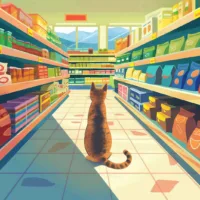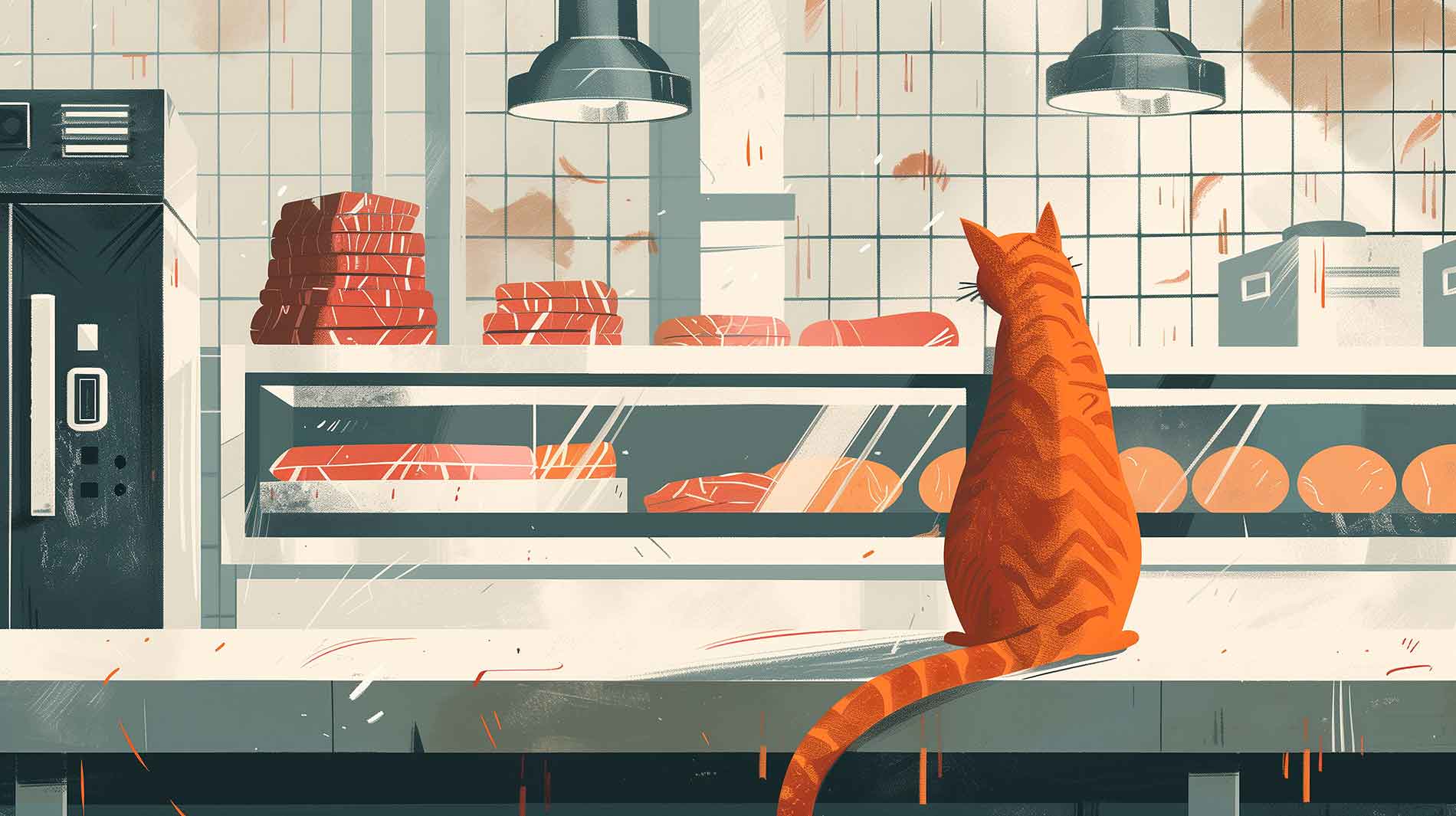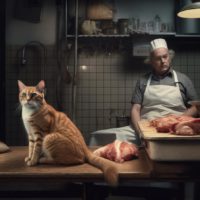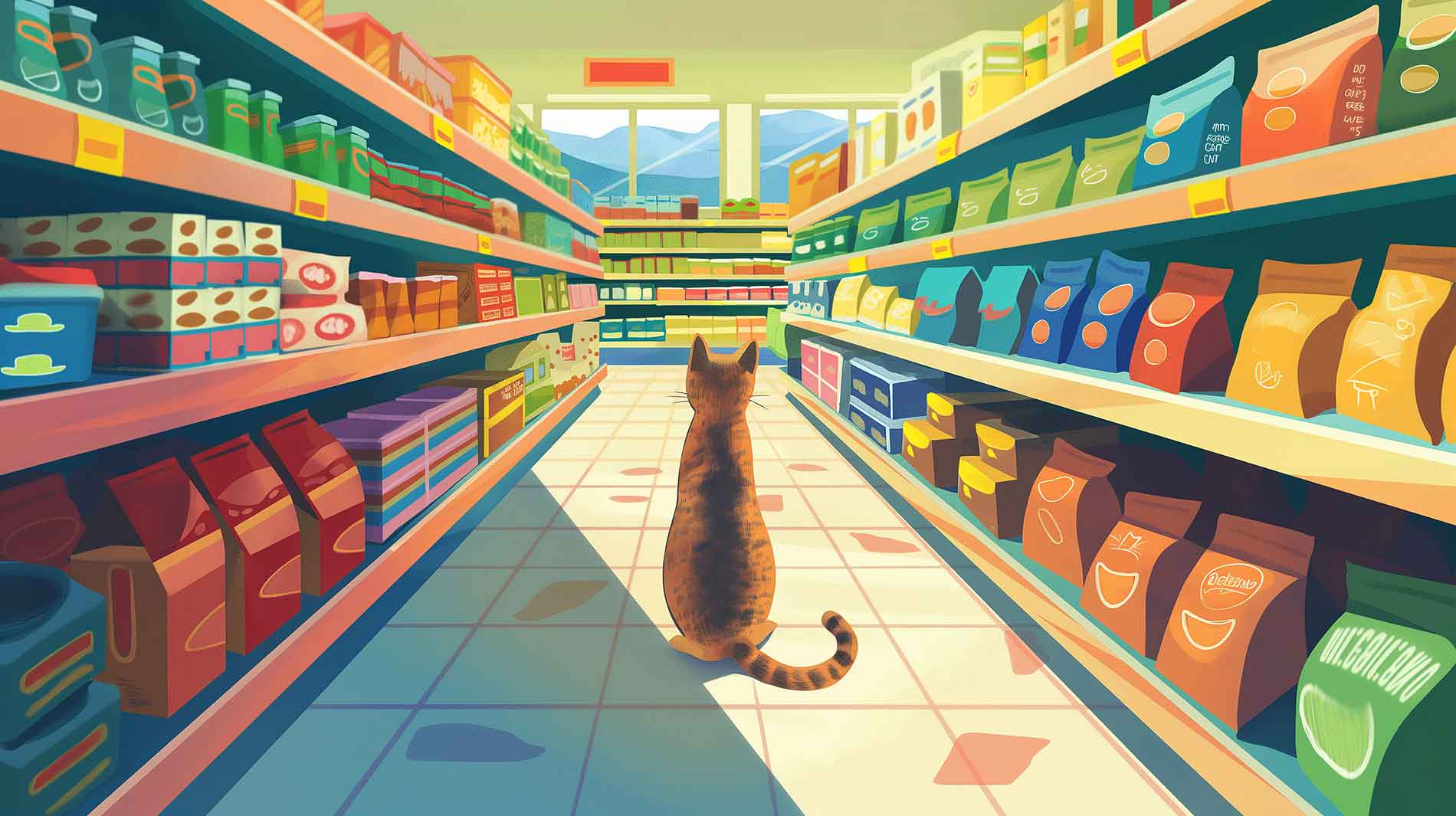Cat food comes in various forms, and the manufacturing process itself contributes significantly to the quality of the food. The consistency primarily varies between ragout, chunks in sauce, minced, pâté, and mousse.
What kind of meat is used in the production of cat food?
The manufacturing processes vary depending on the type of cat food but can generally be divided into similar steps. In the industry, production typically involves using various meat and by-products, often from less premium sources. Instead of using exclusively whole meat pieces, manufacturers often incorporate meat by-products such as carcasses and Mechanically Separated Meat (MSM). However, this doesn’t necessarily mean inferior quality. Firstly, meat for many types of feed is pureed, making the original form of the meat less relevant. Additionally, cats have barbs on their tongues allowing them to effectively scrape meat from bones. They also consume prey with skin and bones in the wild. The issue arises when manufacturers solely rely on these cheaper forms of meat.
Higher-quality parts of an animal contain different or more nutrients, essential for a balanced diet. Unfortunately, relying solely on the manufacturer’s declaration, which often lacks detailed ingredient lists, is common. Only with ragout varieties can one be certain of the parts used, as they are often merely sliced and maintain their original form. The individual ingredients are also visible in the finished product. Dynasty’s ragout cat food is an excellent example where all components, from meat to chicken hearts or vegetable parts, are recognizable.
The temptation to use cheap ingredients is high.
In the production of pâté or mousse, cat food manufacturers often utilize production leftovers such as meat and fish scraps from human food production. These are inexpensive as they cannot be processed elsewhere and would otherwise require costly disposal. However, these unwanted by-products may encompass a variety of different animal sources, not necessarily meeting human consumption standards.
On the other hand, better ingredients include genuine fillet or muscle meat, as well as high-quality organs like heart and liver. These are considered high-quality organs due to their high concentration of essential amino acids, vitamins, minerals, and enzymes. While using them allows for more of the animal to be processed, which is generally positive, it also tempts manufacturers to save on disposal costs by incorporating parts that don’t belong in the production.
The processing of wet cat food
The process of manufacturing cat food begins with mechanically grinding and mixing the meat and by-products. This mixture can also be blended with other ingredients such as grains, vegetables, and binders to achieve the desired consistency and composition.
In extreme cases, this mass is further liquefied and later thickened back into a form. This often results in meat cubes in sauce, which, however, have nothing in common with meat properties anymore.
To sell a complete food, manufacturers must comply with various EU regulations regarding nutrient composition for cat food. These regulations are issued by FEDIAF, the European Pet Food Industry Federation, as guidelines within the EU. Almost all major manufacturers belong to this federation and adhere to the guidelines. During production, the nutrient levels of the individual ingredients, including vitamins and minerals, are calculated through laboratory analysis and extrapolation. The calculated difference to the FEDIAF guideline is then added to the food in the form of a pre-mixed nutrient mix powder (also called premix) during production.
Ragout – newer and more elaborate production of cat food
While ragout is the best form of cat food after Barf, it’s also significantly more expensive than conventional forms, provided the manufacturer does it right. Here, whole pieces of meat and vegetables are processed, sometimes even whole chicken hearts. You can easily recognize the individual parts in a ragout feed. To make a ragout a complete feed, it requires the same additives specified by FEDIAF, such as taurine, vitamins, and minerals. Often, only a portion of the meat is minced and pressed into a sausage (similar to a butcher), incorporating the nutrients. It’s like a coarse sausage without casing. This is then sliced and added to the can.
The different shapes and sizes of meat, sausage, and vegetables make production extremely difficult. Manufacturers require multiple production lines and machines for this type of food. In filling, heavy parts sink to the bottom, while light parts float to the top. Proper mixing in the feed is therefore very demanding and can lead to fluctuations. Many well-known industrially filled ragout brands have this problem. Some are extremely watery, others contain too many vegetables or too many hearts, some cans hardly have any. These challenges often lead smaller providers to manual filling, further increasing production costs.
Production of minced cat food – Pâté and Mousse
With meat pâté-based feed, the process is comparatively simple. Unlike ragout, everything is mixed together, pureed, and filled. This results in a meat paste that is easy to handle and fill. However, to bind this meat paste during cooking into a homogeneous mass, auxiliary substances such as thickeners or binders must be used in production. These ensure that the liquid contained in the paste remains there and a chewable consistency is guaranteed. Lucky Kitty is a manufacturer that avoids these substances, which, though commendable, leads to a very firm lump of meat forming in the middle of the can, separating from the water.
The different designations of cat food such as minced or pâté correspond in production to the fineness of the feed. A pâté is very fine, almost smooth, and no longer resembles the consistency of meat. Minced feed is somewhat coarser and rather reminiscent of ground meat. Wet food in mousse form has a light, airy consistency and in some ways resembles human foods like mousse or pudding. It has a particularly soft texture but is also processed accordingly heavily.
A special form of production is the aforementioned chunks in sauce, which are not real meat chunks but pressed meat paste in cube form, resembling a meat cube. As you can imagine, these cubes are also processed with additives to maintain their shape. By the way, these substances are often not subject to declaration requirements. You won’t find this information on the label of the can.
The cooking process of wet food
A meat paste feed is cooked in large batches after mixing. The cooking process for ragout is similar, except that the ingredients are sometimes precooked individually. To kill microorganisms and extend the shelf life of the feed, the ingredients are heated to high temperatures. Usually, in large-scale productions, this happens in metal tubes. Here, the feed is pressed through the tube with water and then filled into cans. During this transport, some of this liquid gets into the can of wet food.
This water – also part of the cooking process – is indicated on the labels as broth. This is particularly noticeable when dealing with additives. In the northern regions of Germany, manganese is not present in groundwater, so it is added to the production of cat food. A manufacturer with manganese in their groundwater doesn’t need to add it additionally and therefore doesn’t have to label it on the can. The hot cat food is then placed in previously sterilized cans, sealed, and labeled.
How does the smell of cat food develop?
More natural cat food varieties, which are less heavily processed industrially, also tend to have a less intense smell. They retain more of their natural aroma – that of fresh meat. The more heavily processed a cat food is during production, the stronger it often smells like cat food.
You’ll notice the difference immediately when you open a cat food in ragout consistency. Although often the same ingredients are used as in conventional cat food, it smells distinctly different. Moreover, with this type of food, there’s no way to hide anything, as the individual ingredients are easy to identify. Therefore, the raw material quality is often slightly better.
Protein denaturation
When cooking meat, the proteins in the meat are denatured. This means that the protein structure changes, resulting in a change in texture and taste. Denaturation causes the protein to lose its specific shape, which often leads to a loss of its biological activity or function. For example, cooking eggs leads to the denaturation of the protein albumin, changing it from a clear, liquid substance to a white solid. While denatured proteins don’t necessarily change their chemical composition, they do change their structure. However, in meat paste, which consists of minced, ground, or pureed meat, this denaturation occurs faster and more uniformly than with meat chunks.
Change in fat structure
The fat molecules also change when cooking meat. Some unsaturated fatty acids can oxidize, leading to a loss of omega-3 fatty acids. Meat paste, which is often cooked with additives such as oil or broth, may have a higher fat content than meat chunks cooked dry. More fat, in turn, reacts more with the other ingredients and oxidizes more strongly, which is also a reason for the typical cat food smell. Pureed products therefore smell much more unpleasant than, for example, ragout cat food.
Formation of aroma compounds
When cooking meat, new aroma compounds are formed through various chemical reactions. These aroma compounds contribute to the characteristic taste of cooked meat. Meat paste, which is more intensively processed through grinding and mixing, can have a more intense aroma formation than meat chunks that are less processed.
Formation of compounds
During cooking, new compounds can also form between the proteins and other components of the meat. These new compounds contribute to the taste and texture of the cooked meat. With meat paste, this happens much more and faster than with whole meat chunks.
(Technological) additives in the production of cat food
Commercial cat food varieties contain additives such as vitamins, minerals, and flavors. Often also preservatives, antioxidants, thickeners or binders, and colorants. Whether this is the case and how good the quality of the substances used is, cannot always be judged, as many of them do not need to be declared. These substances also change the smell and consistency of the food, so at least it’s possible to infer their use from the type of food. Many additives are suspected of promoting allergies or intolerances.
Changes in nutrient composition are inevitable during cooking
Overall, cooking meat changes the composition of nutrients and the sensory properties, both in meat paste and meat chunks. The exact degree of change depends on factors such as temperature, cooking time, liquid addition, and the type and consistency of the meat. Some nutrients are lost during cooking, while others are released, flushed out, or intensified by the cooking process.
Therefore, you should always make sure to also feed the sauce. With a pureed feed, the broth produced during cooking – and thus the nutrients leached into it – are retained. Due to the thickeners used, meat paste and water recombine into a mass. This is not the case with ragout. Although the nutrients are still in the sauce here, not every cat loves it, while others even “bathe” in it.








